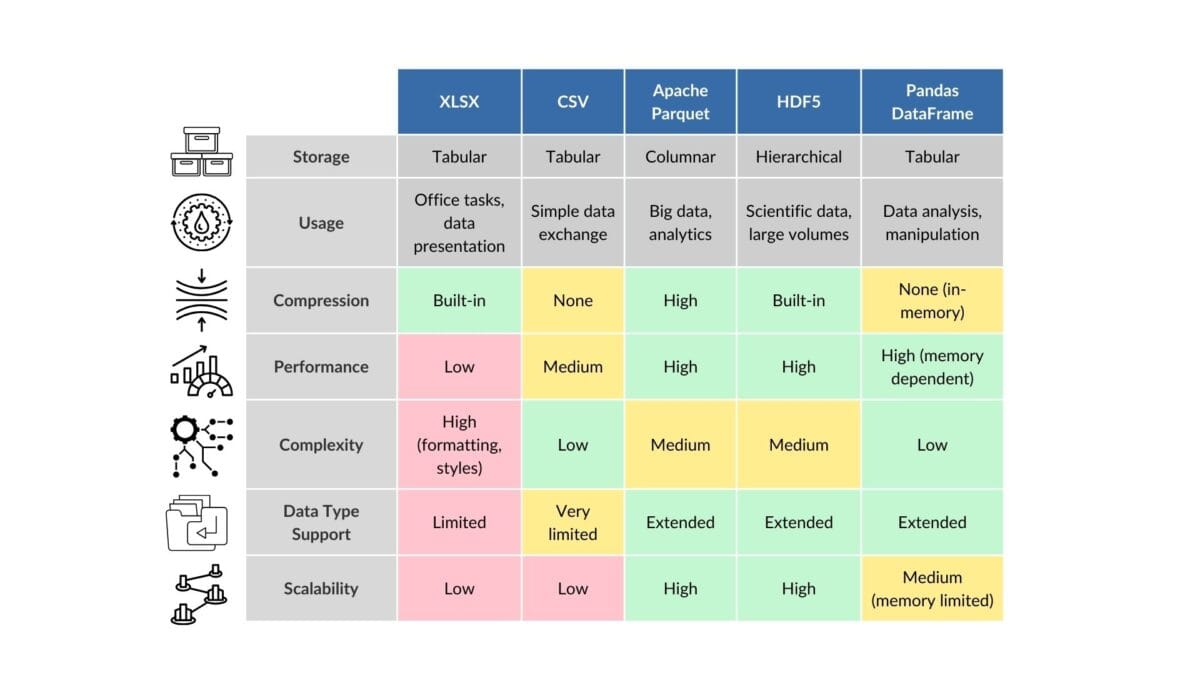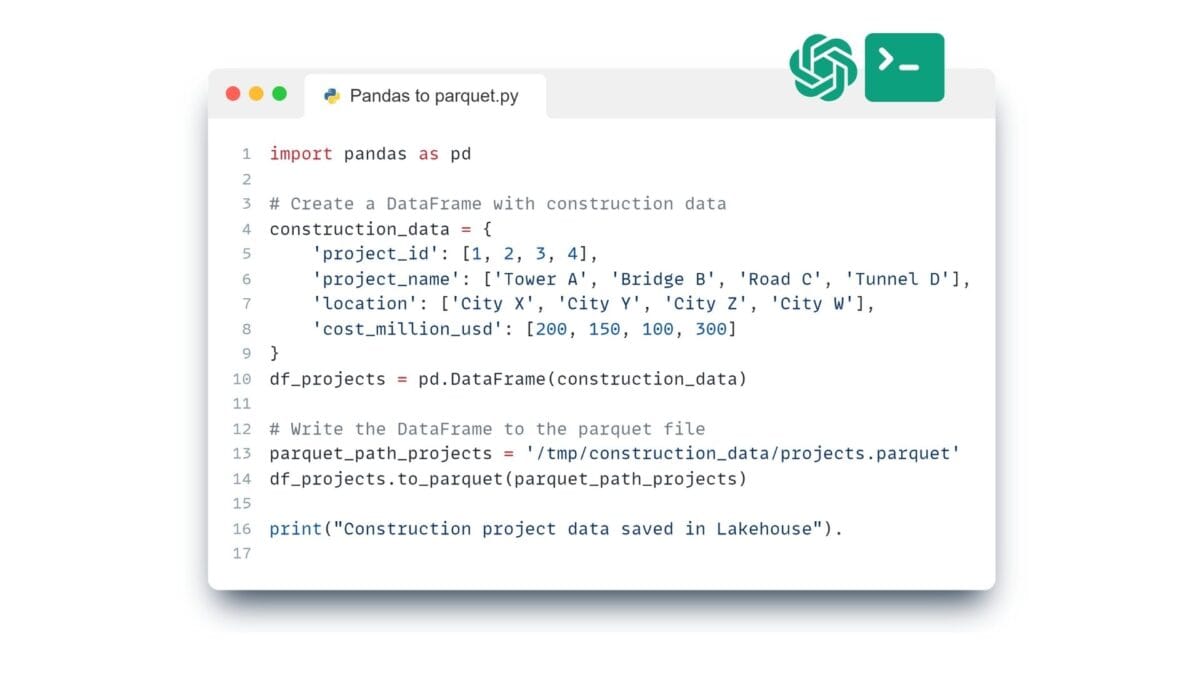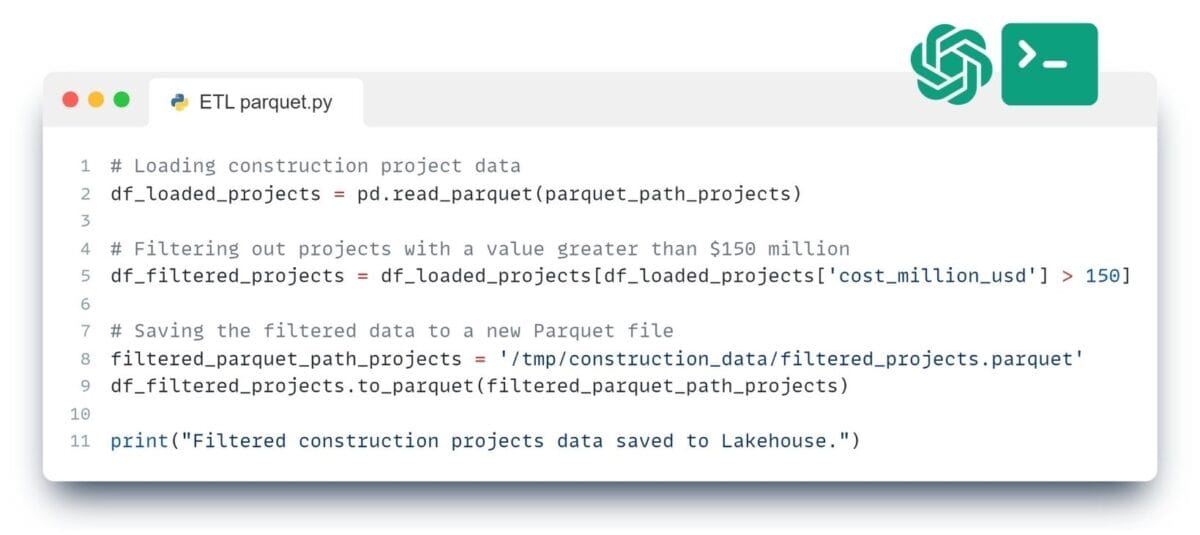For data analysis and processing, which includes operations such as filtering, grouping and aggregation, we used Pandas DataFrame, a popular format for working with data, in the examples above. Pandas DataFrame is designed to work efficiently with data in RAM, but it does not have its own data storage format. Therefore, once we are done working with the data, we export the DataFrame to various tabular formats including XLSX and CSV. These formats provide compatibility with external systems, but lack efficiency in terms of stored data size and versioning capability:
- CSV (Comma-Separated Values): A simple, text-based format widely supported across various platforms and tools. It is straightforward to use but lacks support for complex data types and compression.
- XLSX (Excel Open XML Spreadsheet): A Microsoft Excel file format that supports complex features like formulas, charts, and styling. While it is convenient for manual data analysis and visualization, it is not optimized for large-scale data processing.
XLSX and CSV are characterized primarily by their widespread use in applications where readability, manual editing, and basic compatibility are required, but they are not optimized for storage and high-performance computing tasks.
There are several popular formats for storing data efficiently, each with unique advantages depending on your specific data storage and analysis requirements:
- Apache Parquet: A columnar storage file format optimized for use in data analysis systems. It offers efficient data compression and encoding schemes, making it ideal for complex data structures and big data processing.
- Apache ORC (Optimized Row Columnar): Similar to Parquet, ORC offers high compression and efficient storage. It is optimized for heavy read operations and is well-suited for storing large data lakes.
- JSON (JavaScript Object Notation): While not as efficient in terms of storage compared to binary formats like Parquet or ORC, JSON is highly accessible and easy to work with, making it ideal for scenarios where human readability and interoperability with web technologies are important.
- Feather: Feather provides a fast, lightweight, and easy-to-use binary columnar data storage format geared towards analytics. It is designed to efficiently transfer data between Python (Pandas) and R, making it a great choice for projects that involve these programming environments.
- HDF5 (Hierarchical Data Format version 5): HDF5 is designed to store and organize large amounts of data. It supports a wide variety of data types and is excellent for handling complex data collections. HDF5 is particularly popular in scientific computing for its ability to efficiently store and access large datasets.

A brief comparison of XLSX, CSV, Apache Parquet, HDF5 and DataFrame data formats, highlighting their main differences from a storage and processing perspective
Let's take the Apache Parquet format as an example - it is a freely distributable column-based (Pandas-like) storage format optimized to handle large amounts of data.
Parquet is designed to store data efficiently and compactly compared to traditional relational databases or text-based storage formats such as CSV. Parquet's key features include support for data compression and encoding, which significantly reduces storage size and speeds up data read operations by working directly with the columns you need, rather than all rows of data.
For a visual example of how easy it is to get the necessary code to convert data to Apache Parquet, let's use ChatGPT.
❏ Text request to ChatGPT:
Write code to to save data from Pandas DataFrame to Apache Parquet. ⏎
➤ ChatGPT Answer:

Transferring data from Dataframe in RAM to an efficient for storage and version tracking Apache Parquet format
Let's simulate an ETL process with data saved in a format to filter projects by value.
❏ Text request to ChatGPT:
Suppose we want to filter the data and save only those projects that cost more than 150 million dollars. ⏎
➤ ChatGPT Answer:

ETL process of working with data in the format of Apache Parquet
Designed to provide highly efficient data compression and encoding schemes, the Parquet format significantly reduces storage space and improves the performance of data retrieval operations, making it an ideal choice for both data storage, processing and analytics. It boosts query speed and integrates smoothly with multiple data processing frameworks, enhancing storage, access, and analysis efficiency in these hybrid architectures.
Parquet, a columnar storage file format, excels in managing vast data volumes within Lakehouse models, blending data lakes and warehouses.

















